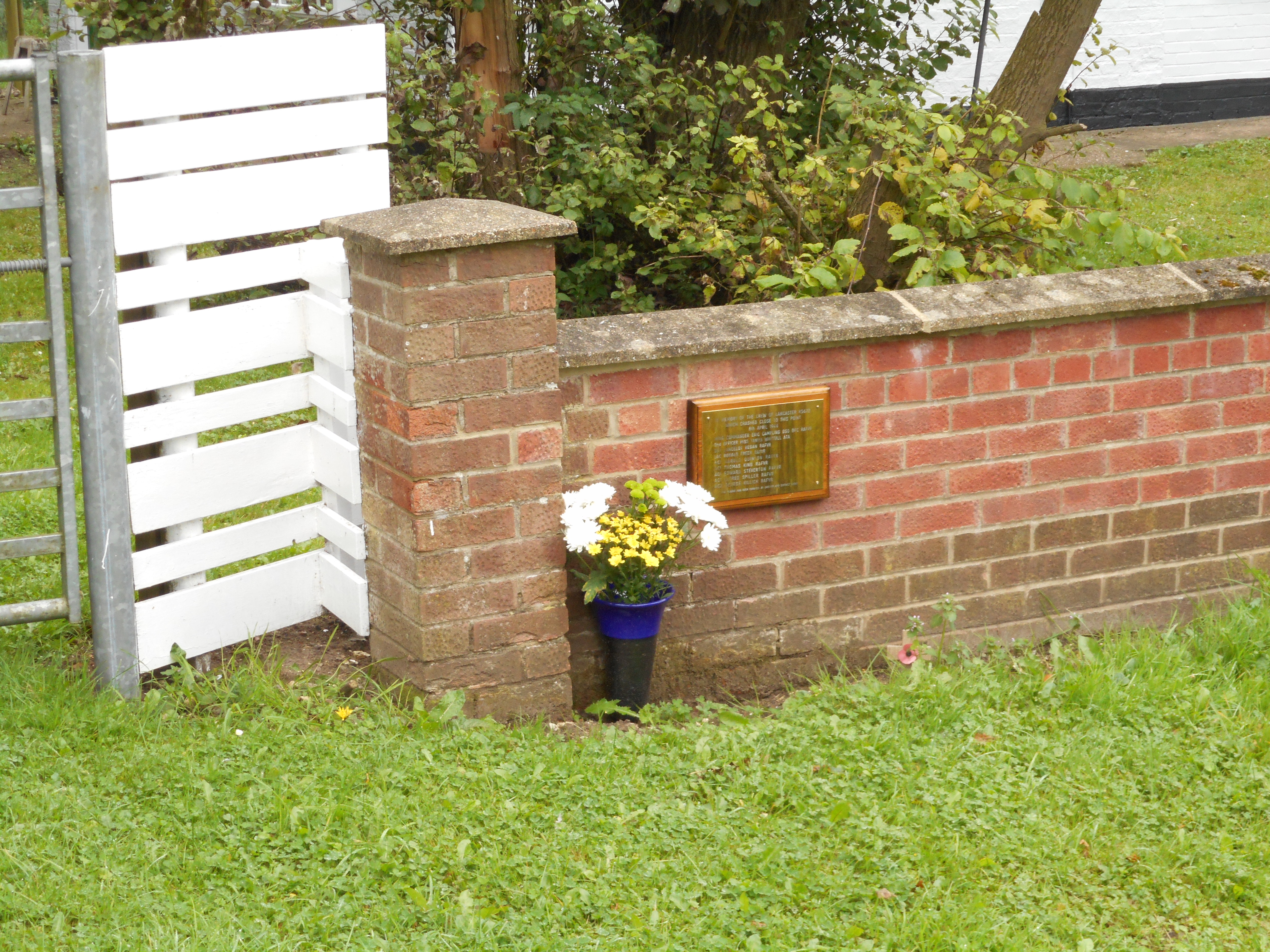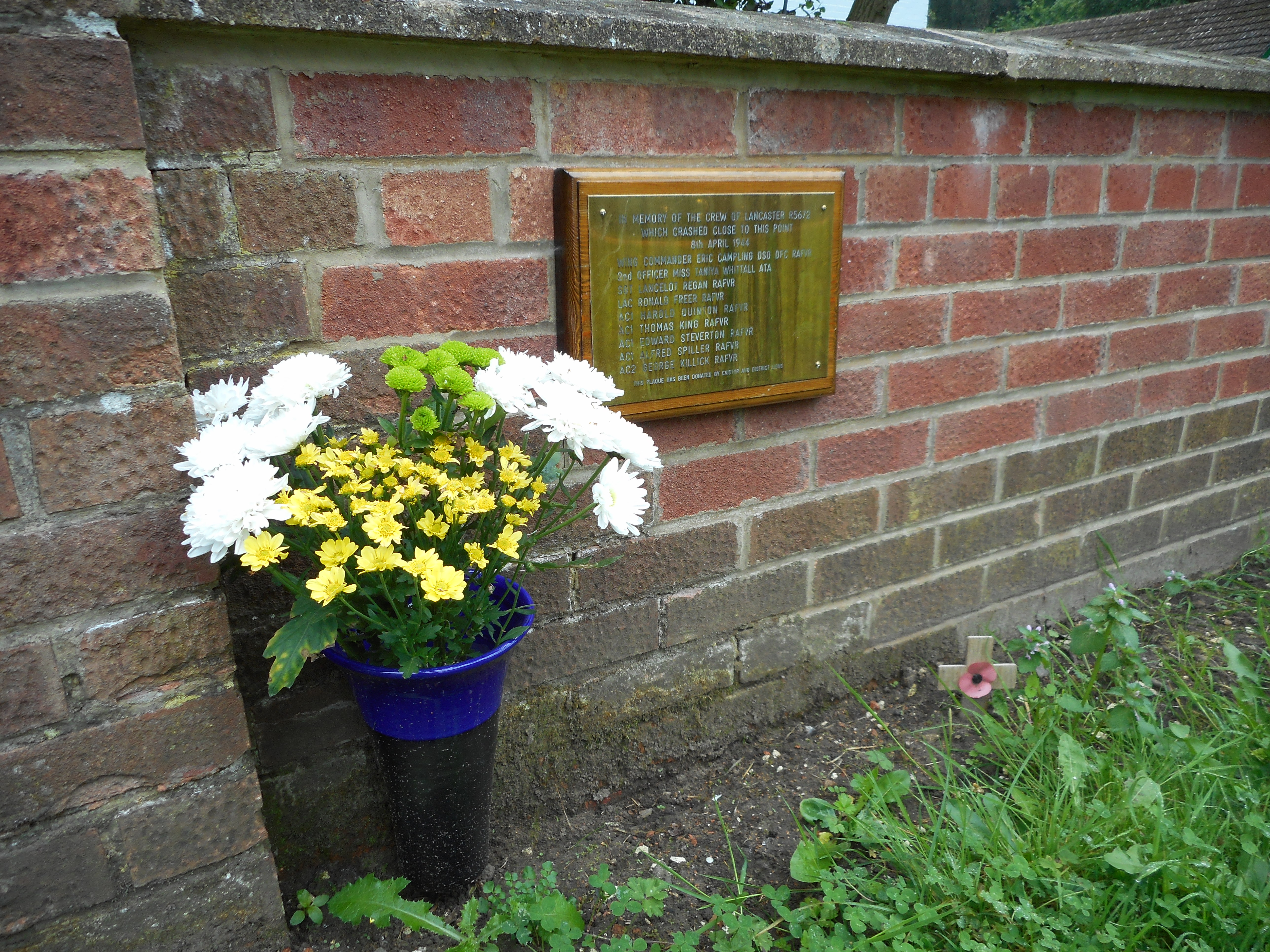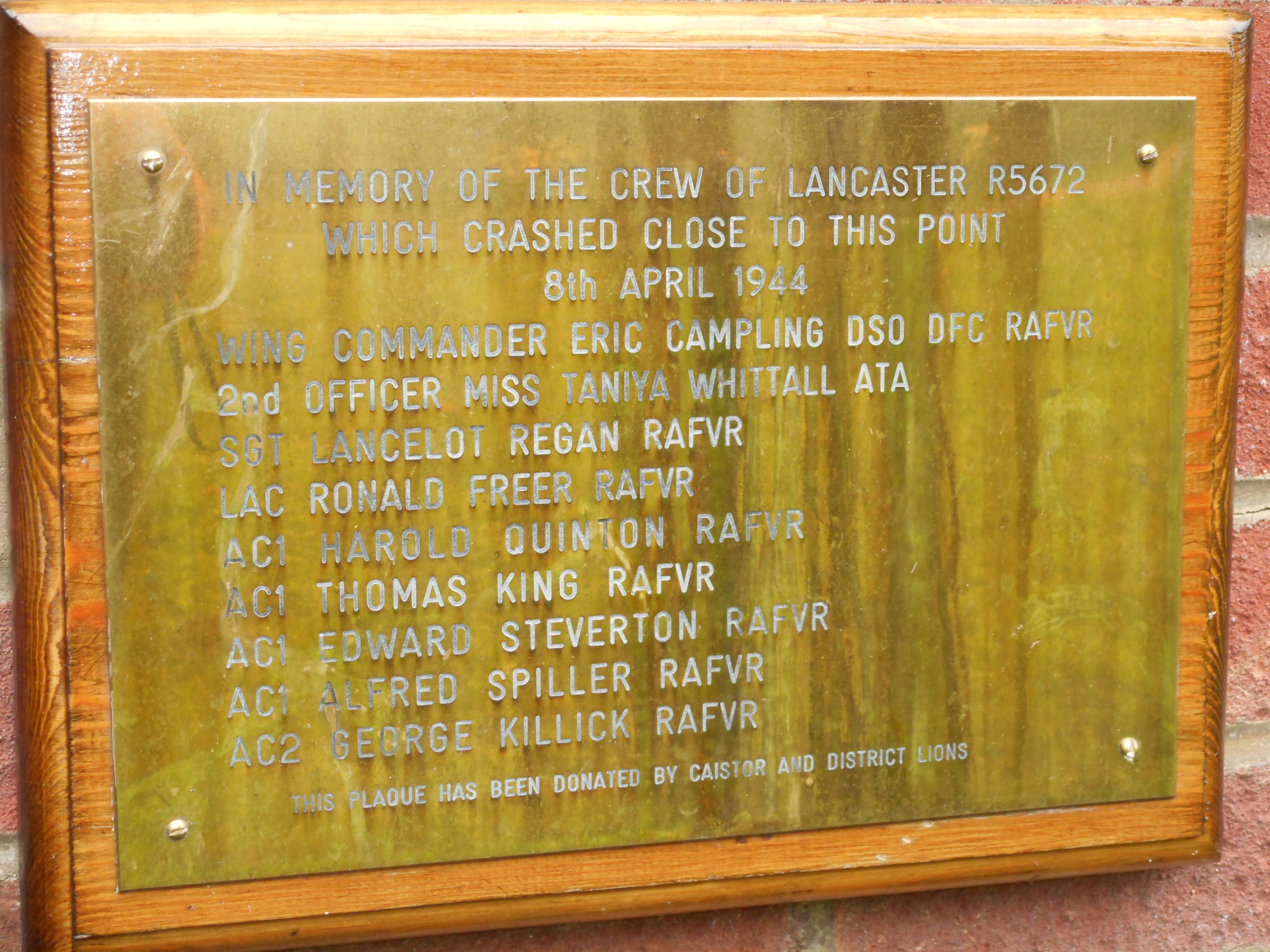| Yorkshire Post, 12 Apr 1944: "WOMAN PILOT IN AIR CRASH ONE OF 9 KILLED From Our Own Correspondent GRIMSBY. Tuesday A verdict that she was killed accidentally in an aeroplane crash while travelling as a passenger was returned at Lincolnshire Inquest this afternoon on a woman ferry pilot, Second Officer Taniya Whittall (24), of the Air Transport Auxiliary, whose home was at Baskings, Selsfield, East Grinstead. Sussex. She was one of nine people killed in an aeroplane which crashed near Caistor on Saturday. It was stated that she, with Wing Commander Campling and a Flight Engineer, boarded the machine at one Lincolnshire aerodrome to fly to another. Gerald Richard Simpson, a student, said he saw the machine near Caistor flying at about 300 feet and losing height. The engines seemed to splutter and stop. There was an explosion and the machine crashed in flames. Squadron Leader James N. Ogilvie said the machine was completely wrecked and fragments scattered over wide area. He picked up A.T.A. cap, a powder compact, and a pilot's licence granted to the woman." The compact and her wrist watch were salvaged, the rest destroyed. Taniya was not on duty at the time (it was her first day on leave), having delivered an aircraft the day before. |
| Taniya first applied to the ATA on 21 Mar 1941: “In response to your appeal for ferry pilots, I wish to volunteer. I joined the Civil Air Guard at Redhill Aerodrome Surrey in September 1938, and gained my ‘A’ licence in May 1939. I have done approximately 30 hours flying (6 hours solo) on D.H. Gypsy I. I am 21 years of age, physically fit, and after the Civil Air Guard was disbanded I worked for 6 months at Headquarters Fighter Command Special Duties Branch as a plotter. I should be very grateful if you would inform me whether there is any possibility of my being accepted for ferry pilot duties”. She was told that her experience did not come up to the required standards. In January 1942 she joined the WRNS instead, as a staff car driver. She persevered, however, and applied again in August 1942 and was accepted. |


